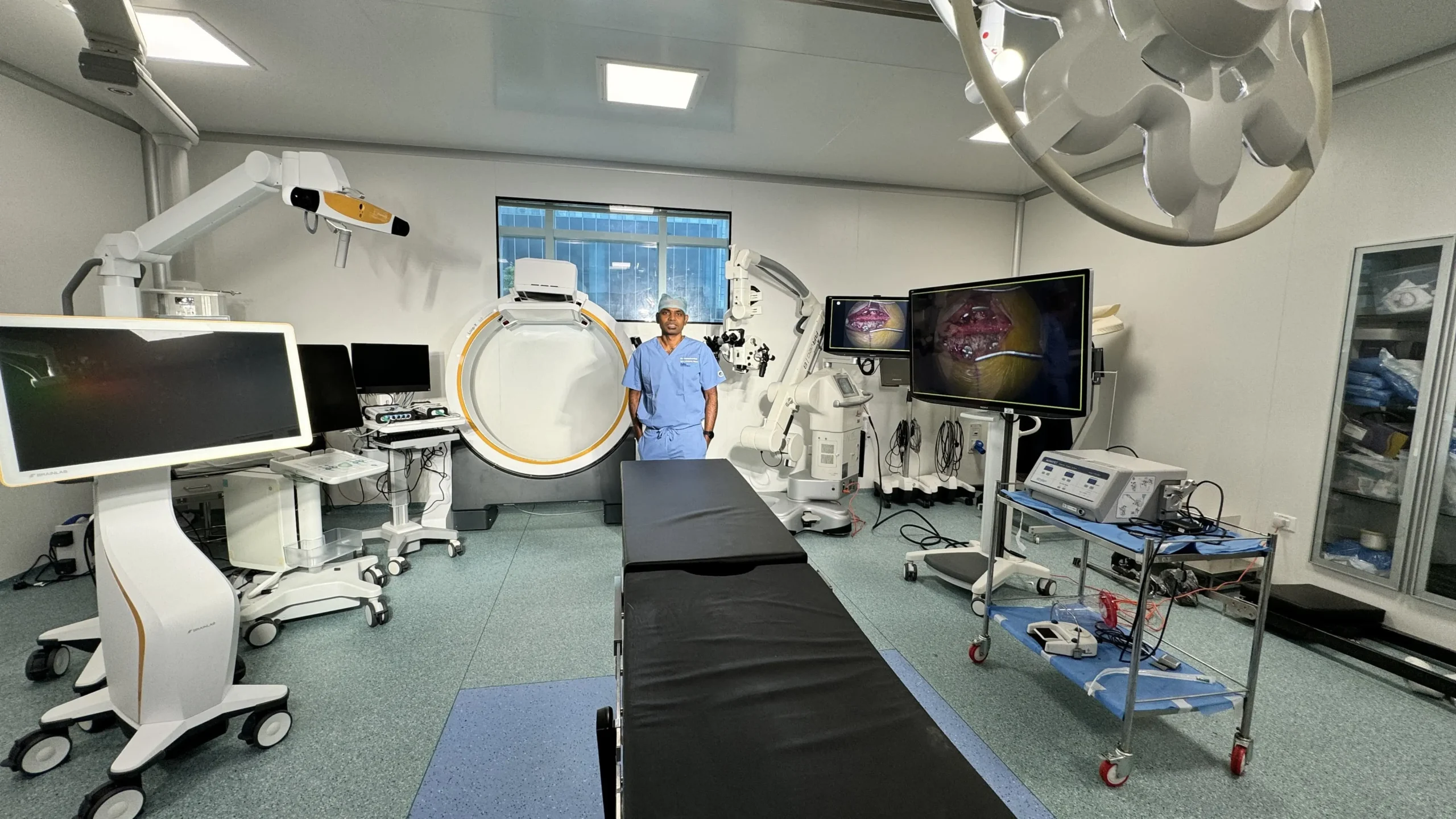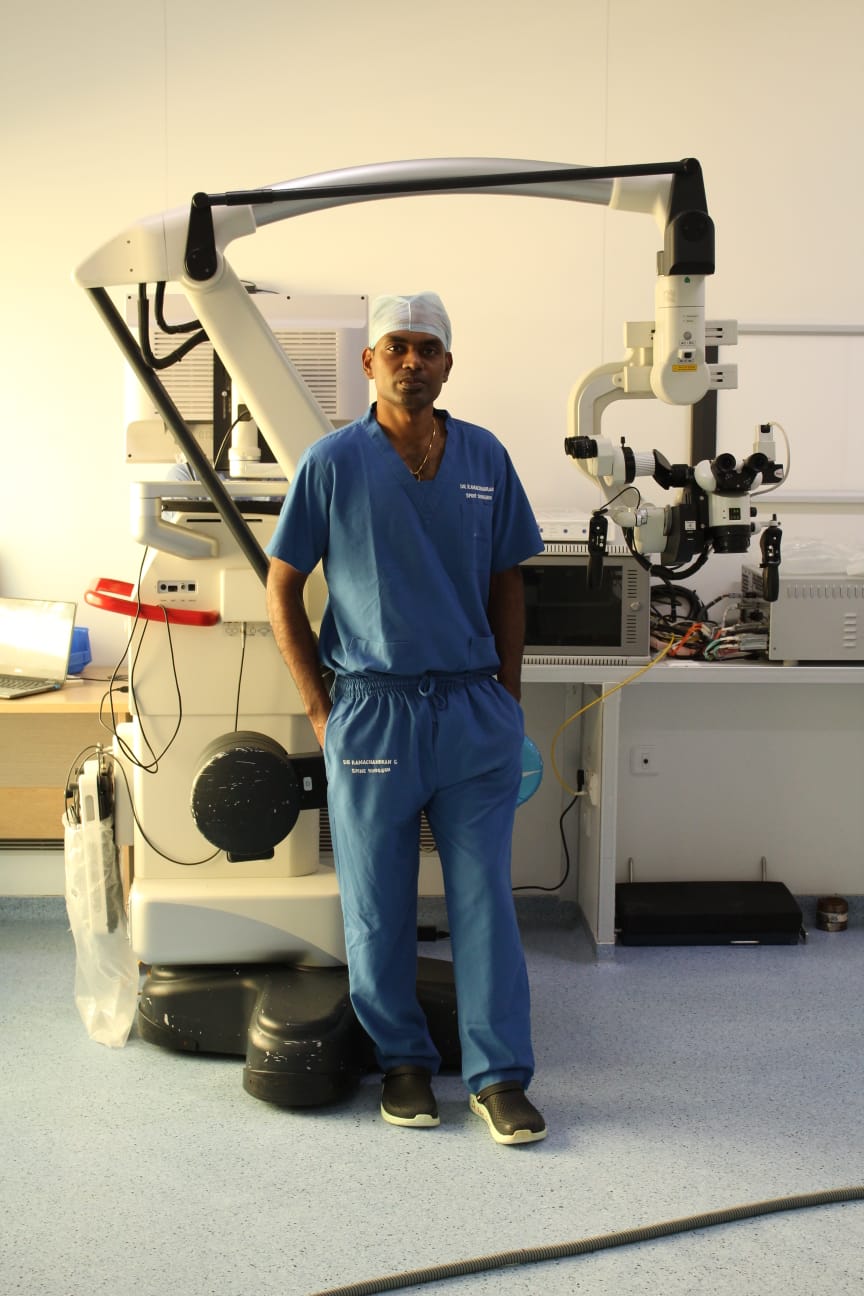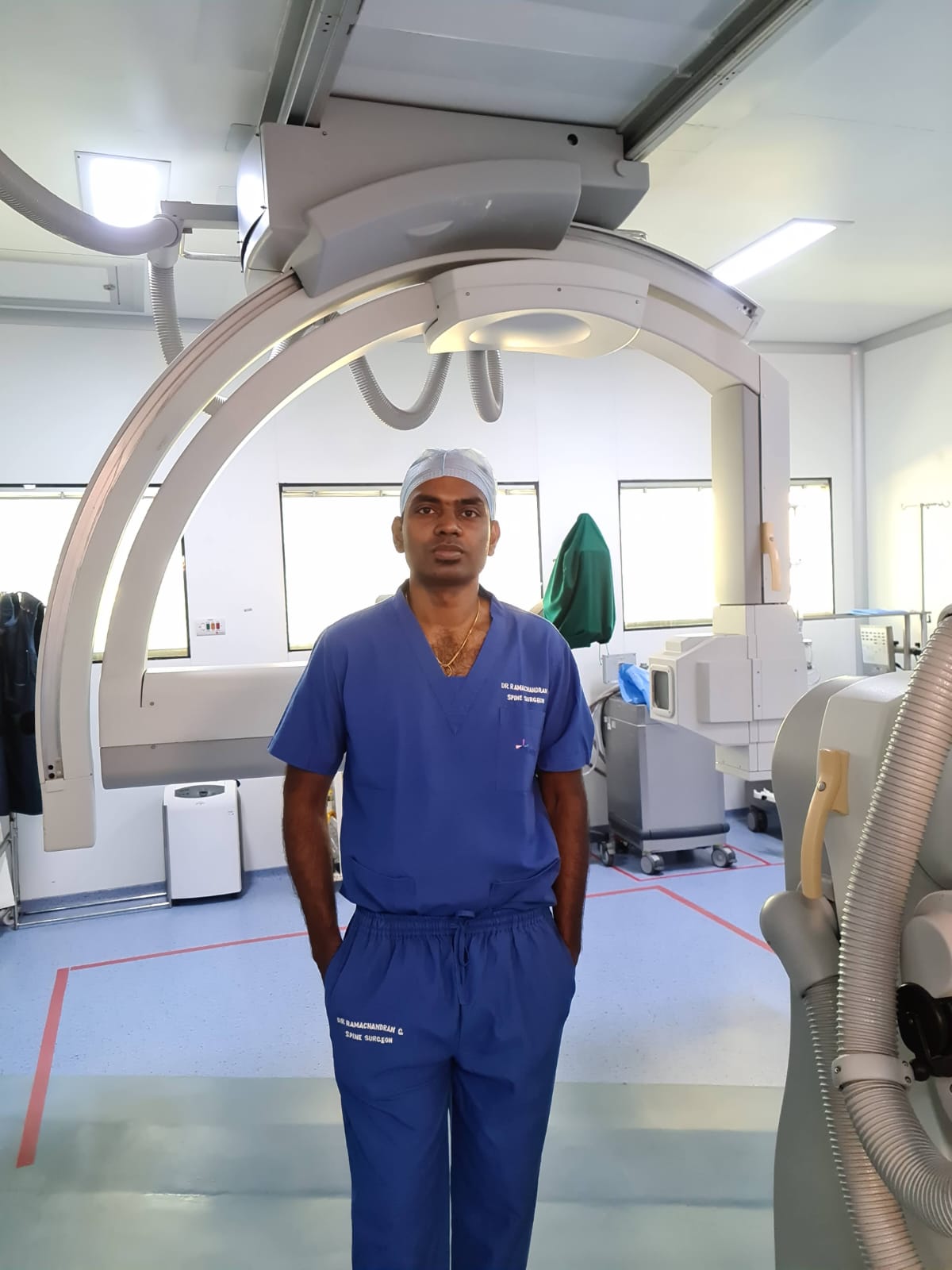The common fear among the general public about Spine surgery is fear of losing senses, movements in legs and hands, and outcomes are not great with multiple recurrences, and multiple surgeries in future. However, Dr Ramachandran believes that this fear can be compared to the fear of air travel in the past. It was once considered dangerous, but with better understanding and development in aviation, it has become a safe means of transportation. Similarly, Dr Ramachandran assures that with a team of experienced doctors, specialized neuroanesthetists, paramedical staff, along with advancements in medical equipment spine surgeries can be performed with excellent and safe outcomes.
1. Dr Ramachandran & Team:
As an exclusive spine surgeon with over 10 years of experience, he is well-versed in both neurosurgery and orthopedic techniques, making him an expert in handling neural structures and instrumentation. The presence of neuroanesthetists also ensures that high-risk patients with cardiac or renal issues can undergo surgery safely. Moreover, the OR personnel are trained specifically for spine surgeries and maintain a sterile environment while assisting the surgeon. With a strong team and proper training, Dr Ramachandran believes that spine surgery can be performed safely and effectively, alleviating the fears of the general public.
2. Medical Equipments:
a) Microscopes & Endoscope – Spine surgery has been a risky procedure due to its proximity to delicate neural structures. The microscope, with its high magnification and illumination capabilities, allows surgeons to have a better view of the surgical site, making it easier to handle the spine with precision and accuracy. This reduces the chances of damaging surrounding nerves and tissues, ultimately making the surgery safer for patients.
b) IONM – Intraoperative neural monitoring is a groundbreaking addition to spine surgery. This specialized device continuously monitors signals from the brain and muscles via the spinal cord, specifically the MEP (Motor evoked potential) and SSEP (Somatosensory evoked potential) signals. These signals are read by a neurophysiologist and alert the surgeon if there is any reduction in strength, allowing for immediate intervention. The use of D waves, a more precise monitoring device, is particularly helpful in tumor surgeries. Ultrasonic bone scalpel – The traditional method of bone removal during surgery, using high-speed burrs and osteotomes, has been replaced by the safer and more efficient ultrasonic bone scalpel. This tool allows for bloodless and precise bone removal during decompression of neural structures.
c) Intraoperative 3D Imaging – The Spine suite is a specialized biplanar fluoroscopy imaging technology, provides real-time imaging of the spine in two planes for minimally invasive surgeries. Intraoperative CT and navigation have also revolutionized spine surgeries by providing 3D images of the spine and acting as a guide for inserting pedicle screws.
d) Robotic spine surgery – Robotic spine surgery is a cutting-edge technology that utilizes advanced imaging techniques to assist in planning and executing spinal procedures. By feeding imaging of the spine into the robotic system, Dr Ramachandran can determine the optimal trajectory, length, and diameter of pedicle screws needed for the surgery. This not only improves the accuracy of screw insertion during surgery but also reduces the risk of complications. Additionally, the robotic system is connected to a navigation system, further enhancing its precision and ensuring that the screws are inserted at the exact intended location. This makes robotic spine surgery particularly useful in complex procedures such as scoliosis and minimally invasive spine surgeries where accuracy is crucial.
With the use of all these advanced tools and a thorough understanding of anatomy and experience of Dr Ramachandran & team, spine surgery has become as safe as air travel.




